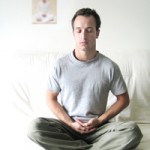by guest author Alys Titchener, author of blog Squashed Mosquito.
Below is a story I wrote about being open.
Why?
Because I found that when I shared this story at a meditation workshop earlier this year, there was a lot of empathy for the situation. And a real life story can start to build up a picture as to what it actually means to live with an open heart.
In this workshop, nicely called Refuge and run by meditation teacher Peter Fernando, we found ourselves asking;
What is being asked of us when we say I want to live with an open heart?
Because, in truth, we were struggling to integrate our recent practice. In this practice, Peter encouraged us to take our meditation of openness and receptivity on a walk with us, through the streets of Wellington.
He instructed us; practice being open in places where we normally shut ourselves off. Notice what that feels like in the body, are we opening or contracting? Is there room to enquire about how our body responds or reacts?
When we came back together, what culminated in the discussion was a shared perception that we need to close off and shut down to the many subtle and overt pollutants out there.
There’s too much advertising. Too much manipulation. Too much sadness, anger, fear, whatever. There’s too much of everything and it’s hard to walk down a street like Lambton Quay while remaining open!
In a controlled environment, it’s wonderful, almost surrel to walk around with an open heart. Yet most of us expressed feeling unsafe about being open around people who are unconscious to their pain, that is; the every day world and people we play with.
For most of us; being open in that world means we pick up on their emotions, and inadvertently end up wearing some of it. These emotions blip on to our radar screen as sadness or anger or fear, and depending on the make up of our emotional chemistry that day (or that life time) these may stick to us like they were ours all along.
So not only are we processing our ‘stuff’, we end up processing theirs as well. And things become very intense; the word “overwhelmed” came up often.
So what is the practice to cope with an open heart we asked?
And if ever a perfect pearl were placed into our hands to unwrap truth a little further, it was in this moment as Peter remembers a beautiful quote from a teacher of his, Ajahn Sucitto:
Equanimity is allowing ourselves to be affected, without holding on to the effect.
It is a poignant quote that cuts through many layers. On one level, we are reminded that these feelings aren’t ours to own; we don’t need to hold them as ours. Love exists regardless of us. Sadness exists regardless of us.
And in allowing ourselves to be affected, this affirms our natural instinct to empathise with our neighbours.
Yet the wisdom goes further; to not hold on to the effect becomes a choice. We can say the sadness is ours, or we can feel sadness as the effects felt in the context of awareness. This awareness allows us to either close off and protect ourselves, or in a conscious way, open to it and move with the energy.
These are inspiring words, but still, we wondered, what does that quality look like? How would it play out in life?
I sat with this question for a moment and a recent incident came to mind. It illustrated for me how, when I am willing to be open and be present to some intense emotion, in that willingness, there is an opportunity for healing and compassion, far greater than I could have anticipated, to emerge.
So I share this story below. It is a story about discovering the qualities of equanimity through a dying mouse.
~
My husband and I are one week into house-sitting a rambunctious house of pets for friends of ours. We get up late this morning. The chicken’s aren’t happy, I can hear them squabbling. Sammieji – the tabby – is attentive underfoot, asking for her morning meal. Yes; everyone is feeling deprived.
I feed cat and fish and watch my husband, in his wetsuit, attend to the chickens feeling grateful that he’s picked up that task; it’s by far the most cumbersome. Today, in the late morning, they are fractious, peaking each other or escaping under their cage. What a bother! Yet, I commiserate; I am, after all, in a position of guardian, and they are at my mercy for feeding. I would hate to be kept waiting too.
My husband heads out for his surf shortly afterwards, we are slowly acclimatising and accepting our responsibilities. It’s still largely novel for us and I congratulate myself for attending to their needs before picking up mine. I head to my laptop to start my day’s writing. At the power socket lies a tiny little mouse.
Oh Sammieji, you’ve killed a mouse!
I go to collect the dustpan to toss the little mouse into the garden. As I gather it up, it starts breathing – or I notice it. Oh Crap! Sammieji, this is even worse! Why couldn’t you eat her?! Like a responsible hunter! I can’t just chuck lil mouse out now!
I gather her up as best I can – I’m slightly squeamish – and place her under a flax bush near the backdoor. She looks around, opening the smallest eyes and sniffing around with tiny whiskers. You’re still a baby aren’t you! Oh Sammieji, find something at the end of their life if you must play your games. A baby isn’t acceptable.
It’s silly, I know, to be berating a cat; she is simply being a cat. Perhaps it was a gesture of love, perhaps a reprisal for our half day of neglect (in her eyes). I feel a little responsible for her actions, yet I’m lost as to how to help the little mouse.
I think maybe a raw egg might be desirable sustenance, but I only achieve an awkward egg bath for the poor baby. The sight is ridiculous so I stop helping at this point and decide non intervention is my best approach.
But what does that mean? Because I am unable to walk away.
I sit next to baby mouse who is now reclining awkwardly on a leaf I fashioned for the job. Still unable to not do something, I place a buttercup flower near her, to either eat, smell or simply enjoy the view. She breathes and breathes, and squiggles away. She has lost the use of her back legs; no doubt Sammieji disabled her in the chase. And I feel I’m being less than helpful in every action.
There is nothing I can do, little mouse, to ease this time for you. I am drawn into a momentous sadness, larger than the whole of her short little life; for every action and inaction that brought suffering to animals at the hands of humans.
I see her little beating heart pumping through her broken body and am saddened by testing that is done on lab mice. I cry, tears way out of proportion to this dying mouse. I am grieving for something I don’t understand and in this feeling, I know the only offering I have for this mouse is my gratitude. You let me cry for every being that suffers. You let me see you at your weakest, and I feel dignity and grace for your soul.
I send her love and kindness, and spontaneously it grows to fill the house, filling all the previous fractious energy with peace and acceptance. It explodes out now, into the property and then all of Paekakariki, and the Kapiti coast. May all beings know peace. May all beings know love. May all beings be well.
It strikes me, in my time house-sitting with all these animals, I keep feeling a deep recognition and appreciation that each soul on this planet volunteers to not only be here on earth, but to be of services for the greater good and for the purpose of learning. Animals are so humble in this task. I contemplate how, as sentient beings, we can be as gracious or reluctant in this journey as we choose. Somewhere in me I feel this little mouse is alive and in tune with her journey.
I look down at the mouse and thank her for volunteering for this experience. It has enabled some rebalancing into peace, at some level, for myself and this house. I can feel the lightness of it.
It is over an hour since I began sitting with the little mouse. I have cried tears that don’t feel indulgent; they feel like a river feels when it has burst a man-made damn and is now unencumbered. I feel the sadness finding expression and moving onward.
My husband returns from his surf. He is shocked that I have prolonged this mouse’s suffering; he feels pity and is agitated for the immense suffering she must be going through. These are all exacting thoughts and jagged piercings into my ears. It’s not right, I think. But then I don’t know what is right in this situation.
Perhaps I design too much significance in this little mouse’s experience. Perhaps it would be more merciful to end her life with a large stone. I have moved away from her now. Before I saw her as suffering, I was calm and at peace with her. And now I sit apart, unable to hold that space.
I don’t know what is right or proper in this moment; only that I have fully grieved for something that involved a little mouse dying in front of me to invoke.
My husband finds a stone, heavy and flat. I am unable to watch, so move inside. He comes in later and tells me he couldn’t do it. He ends up sitting with the dying mouse in silent meditation.
I return. I feel the small mercy in this. I feel the small mercy in noticing this little’s mouse’s passage into its last breath. I feel the openness in holding the infinite sadness and then letting it go. I feel the equanimity of life passing through me.
In response to the discussions at the end of the Refuge workshop, Peter is offering a 4 week course called Being Peace which explores equanimity in the context of an open heart. The course starts on 17th July 2010 and runs for 4 consecutive Saturdays, from 4 – 5pm at Yoga Unlimited, located on Tory Street in Wellington.
You can contact Peter at peter@originalnature.co.nz for more details.


Leave a Reply